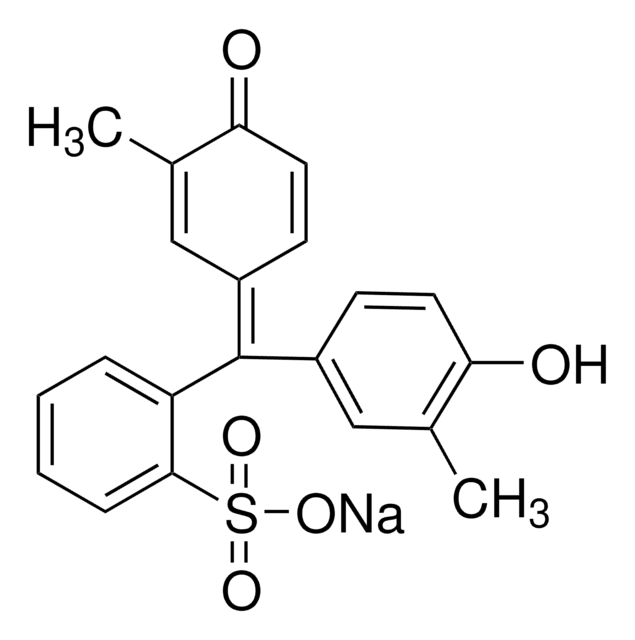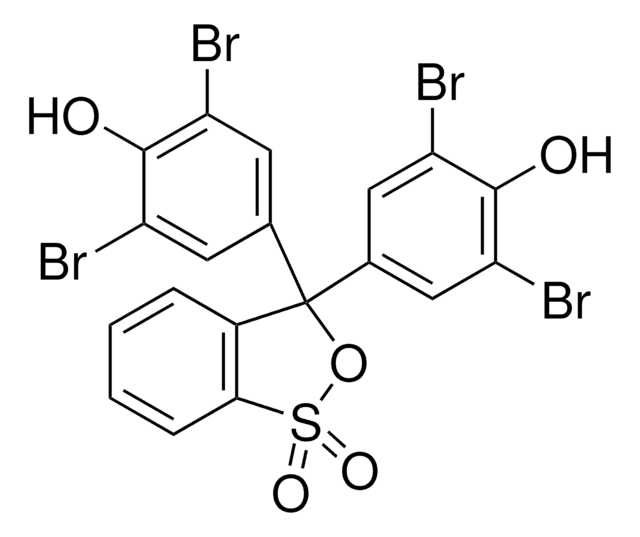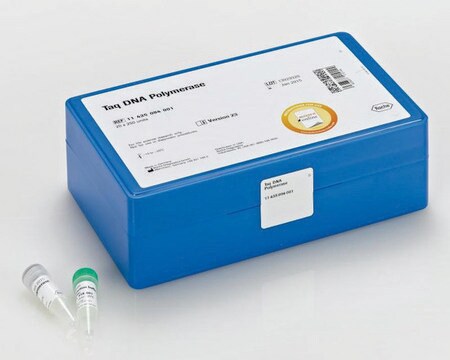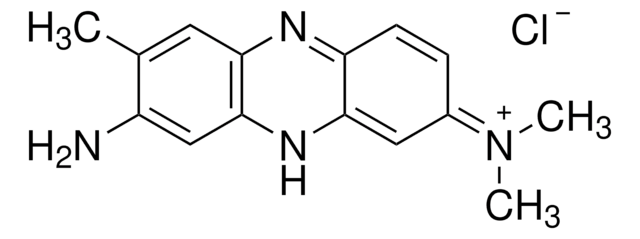114472
Cresol red
indicator grade, Dye content 95 %
Sinonimo/i:
o-Cresolsulfonphthalein
About This Item
Prodotti consigliati
Grado
indicator grade
Livello qualitativo
Stato
powder or crystals
Composizione
Dye content, 95%
tecniche
titration: suitable
Colore
red-brown
pH
7.2-8.8, yellow to red
Intervallo di pH utile
1.8-2.0, orange to yellow(acid)
7.0-8.8, yellow to violet(alkaline)
Punto di fusione
290 °C
Densità
0.998 g/cm3
λmax
367 nm (2nd)
570 nm
applicazioni
diagnostic assay manufacturing
hematology
histology
Temperatura di conservazione
room temp
Stringa SMILE
Cc1cc(ccc1O)C2(OS(=O)(=O)c3ccccc23)c4ccc(O)c(C)c4
InChI
1S/C21H18O5S/c1-13-11-15(7-9-18(13)22)21(16-8-10-19(23)14(2)12-16)17-5-3-4-6-20(17)27(24,25)26-21/h3-12,22-23H,1-2H3
OBRMNDMBJQTZHV-UHFFFAOYSA-N
Cerchi prodotti simili? Visita Guida al confronto tra prodotti
Descrizione generale
Applicazioni
Codice della classe di stoccaggio
11 - Combustible Solids
Classe di pericolosità dell'acqua (WGK)
WGK 3
Dispositivi di protezione individuale
dust mask type N95 (US), Eyeshields, Gloves
Scegli una delle versioni più recenti:
Possiedi già questo prodotto?
I documenti relativi ai prodotti acquistati recentemente sono disponibili nell’Archivio dei documenti.
I clienti hanno visto anche
Il team dei nostri ricercatori vanta grande esperienza in tutte le aree della ricerca quali Life Science, scienza dei materiali, sintesi chimica, cromatografia, discipline analitiche, ecc..
Contatta l'Assistenza Tecnica.










